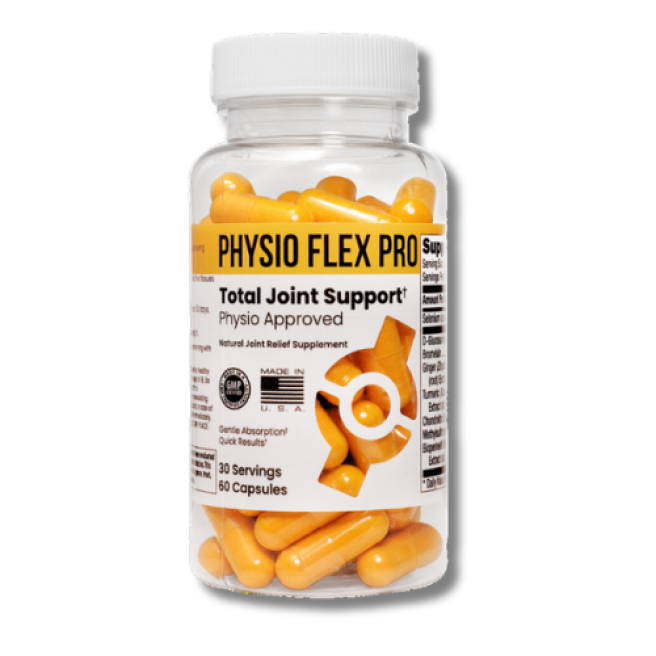Both the green-lipped mussel and glucosamine play important roles in joint health and arthritis management, but which one is better at providing swift and effective joint relief and other health benefits?
If you’re considering giving either supplement a try, we’ll brief you on the differences between green-lipped mussel vs glucosamine to help you decide which is better for your joint health.
What is a Green-Lipped Mussel?

Origin and Composition
The green-lipped mussel (Perna canaliculus), known as the New Zealand mussel, is a staple food for the indigenous Māori people of New Zealand’s coasts. It contains several active ingredients with anti-inflammatory properties, such as phospholipid lysolecithin (which also has antihistamine properties), polysaccharide glycogen (which suppresses immune activation at sites of inflammation), and protein fractions.
Health Benefits
The green-lipped mussel is rich in omega-3 fatty acids, containing eicosapentaenoic acid (EPA), docosahexaenoic acid (DHA), and eicosatetraenoic acid (ETA). The latter acid belongs to the family of eicosanoids, which are synthesized from oxidized polyunsaturated fatty acids (PUFAs).
Green-lipped mussel extracts have been studied for their anti-inflammatory properties, benefitting, in particular, arthritis and other joint-related health problems. The same properties can benefit other inflammatory conditions like asthma and muscle soreness. It can also benefit the digestive system by promoting a healthy gut microbiome.
Some researchers have also studied how the fatty acids extracted from the New Zealand green-lipped mussel can help with ADHD, hyperactivity, and learning problems among children.
Scientific Studies and Evidence
Various studies showed that green-lipped mussels helped significantly improve knee joint pain, stiffness, and mobility among osteoarthritis patients. Another study shows that green lipped mussels help rebuild cartilage since it’s rich in glycosaminoglycans, principal components of cartilage and synovial fluid found in the joints.
Various trials saw how green-lipped mussels show strong analgesic properties, proving more effective in reducing pain and improving function when taken synergistically with usual painkillers (paracetamol) and NSAIDs.
What is Glucosamine?
Definition and Types
Glucosamine is a naturally occurring amino acid found in the cartilage. When used for supplements, glucosamine is harvested from shellfish shells (glucosamine sulfate) and manufactured in pharmaceutical laboratories.
Its plant-based form, glucosamine hydrochloride, comes from the biomass of Aspergillus niger, a fungus with an outer shell rich in chitin, a long-chain polymer similar to that of crustacean shells, serving as an alternative for people with shellfish allergies or observe a strict vegan or kosher diet.
Health Benefits
Glucosamine is best known for its anti-inflammatory effects, believed to benefit mild to moderate osteoarthritis cases and repair worn-out cartilage, making it a popular ingredient in many joint health supplements and medications.
However, its anti-inflammatory properties go beyond joint health. Some studies have claimed that it may potentially benefit those with Inflammatory bowel disease (IBD), the chronic inflammation of the intestines. Researchers also found that glucosamine can potentially reduce multiple inflammation and neurodegeneration markers in people who suffer from multiple sclerosis.
Scientific Studies and Evidence
One study found glucosamine effective in relieving pain caused by osteoarthritis in the knee, endorsing it as an ideal supplement to treat patients with such conditions.
Some studies found glucosamine effective in relieving pain caused by knee osteoarthritis, reducing stiffness problems, strengthening the cartilage, and improving glucose metabolism in people with knee osteoarthritis.
Comparative Analysis of Green-Lipped Mussel and Glucosamine
Efficacy in Joint Health
Green-lipped mussels contain omega-3 fatty acids, which have anti-inflammatory and joint-protecting properties. One study interpreted its mechanism of action of preventing rheumatoid arthritis through regulating pathologic immune cells, reducing the production of proinflammatory cytokines, and suppressing osteoclastogenesis.
On the other hand, the mechanisms of action for glucosamine include maintaining elasticity strength, reinforcing the integrity of the cartilage, inhibiting proteolytic enzymes (elastase, hyaluronidase), and promoting glycosaminoglycan and proteoglycan synthesis.
Green-Lipped Mussel vs Glucosamine
Glucosamine
Clinical Trials and Studies:
- Efficacy: Numerous clinical trials have investigated the efficacy of glucosamine in osteoarthritis, particularly of the knee and hip. Some of these studies have shown positive effects, such as reduced pain and improved joint function.
-
Meta-Analyses and Reviews:
- Several meta-analyses have been conducted, with mixed results. Some have found moderate benefits in reducing pain and improving function, while others suggest that its efficacy is similar to a placebo.
Meta-Analyses and Reviews:
- Several meta-analyses have been conducted with some finding moderate benefits in reducing pain and improving function.
Green-Lipped Mussel
Clinical Trials and Studies:
- Efficacy: There are fewer studies on green-lipped mussel compared to glucosamine. The existing studies have shown some potential in reducing arthritis symptoms, like pain and inflammation.
- Comparative Studies: Few studies have directly compared green-lipped mussel with other arthritis treatments, making it harder to gauge its effectiveness relative to more established therapies like glucosamine.
Meta-Analyses and Reviews:
- Due to the limited number of high-quality studies, comprehensive meta-analyses are scarce. The existing reviews suggest potential benefits, but also emphasize the need for more rigorous research.
Manifestation of Results
Based on user testimonials, taking green-lipped mussels showed results within 2-8 weeks of consistent supplementation, while those who took glucosamine religiously noted improvements within 3-8 weeks.
However, it’s important to note that there is no fixed time for achieving results since everyone has an individual response to medications/supplements. Factors like the prescribed dosage, severity of joint issues, and lifestyle habits can positively or negatively influence the supplement’s effects.
Side Effects and Safety
Consuming green-lipped mussels or taking them in supplement form may cause occasional side effects, such as:
- Diarrhea
- Nausea
- Intestinal gas
Green-lipped mussels’ interactions with other drugs or medications haven't been fully established. However, caution must still be exercised when taking them simultaneously. Consult your healthcare provider regarding this matter.
While incidences are rare, glucosamine is known to exhibit the following side effects:
- Drowsiness
- Headache
- Nausea
- Constipation
- Diarrhea
- Heartburn
- Rashes
Glucosamine is known to interact with medications like acetaminophen and warfarin. Both forms of glucosamine (sulfate and hydrochloride) are not recommended for use in children and adolescents under 18 due to insufficient data on safety and efficacy. However, there is no current weight limit for taking glucosamine supplements.
There isn't enough reliable research to determine whether glucosamine or green-lipped mussels are safe for pregnant or breastfeeding women. It’s best to stay safe and avoid taking either supplement without consulting a trusted healthcare provider.
Accessibility and Availability
Glucosamine supplements may come in tablets, capsules, liquid, and powder and are widely available in pharmacies, retailers, and online stores. While green-lipped mussel supplements are likewise available, glucosamine is more widespread and is often blended with other substances like chondroitin and methylsulfonylmethane.
On average, glucosamine supplements cost around $24 to $90, while green-lipped mussel extract supplements range from $25 to $50, depending on the variant or quantity.
User Preferences and Suitability
There is not much difference regarding their pill sizes and dosages. These supplements are normally taken after a meal at any time of the day to increase their absorption and efficacy and avoid possible side effects.
Supplements may also vary on how many times they should be taken daily (usually 2-3 capsules/tablets divided into the day's meals). If the dosage is too minimal or strong, you can consult your doctor to adjust it to help yield its desired benefits better.
Since glucosamine and green-lipped mussel supplements are derived from shellfish shells (shrimp, crab, and lobster), they could cause an allergic reaction in people with shellfish allergies.
Fortunately, glucosamine is also available in vegan form, which is sourced from the biomass of the Aspergillus niger fungus.
Sustainability
The green-lipped mussels are one of the world's most environmentally sustainable species to farm. Mussels are generally highly self-sufficient and mostly feed on plankton in the sea, and as filter feeders, the mussels help clean the water, which in turn greatly benefits the marine ecosystem.
Conventional glucosamine production using shellfish with the shells used as raw materials being more prone to supply and demand issues.
FAQs
Q1: Can green-lipped mussel and glucosamine be taken together?
Taking green-lipped mussel and glucosamine supplements together is generally safe and can be done to produce a stronger, synergistic effect on the joint issues like pain and immobility.
Q2: Which is more effective for severe arthritis?
Glucosamine has been more widely studied, especially for osteoarthritis, and some studies have shown it can reduce pain and improve function in people with knee or hip osteoarthritis. However, its effectiveness can vary greatly among individuals.
Green-lipped Mussel is less studied, but some research suggests it may help reduce pain and inflammation associated with arthritis. It contains omega-3 fatty acids, which are known for their anti-inflammatory properties.
Q3: How long does it take to see benefits from each supplement?
Normally, it may take around a timeframe of 2 to 6 weeks of consistent intake to finally see results. However, depending on their health and lifestyle factors, everyone responds differently to the supplements, so it may come fast or take a while for them to see noticeable results.
Q4: Can either supplement cause allergic reactions?
Since both green-lipped mussel and glucosamine are shellfish-based, those with shellfish allergies should not take them.
Q5: Are there any dietary or lifestyle changes that enhance the effectiveness of these supplements?
Eating a healthy diet and observing healthy lifestyle changes can definitely enhance the supplementation regimen and increase its effectiveness. This pairing helps you improve or maintain your overall health and meet your daily nutrient needs.
Conclusion
In conclusion, when comparing green-lipped mussel and glucosamine in for joint health, glucosamine has a more extensive body of scientific evidence, particularly in managing osteoarthritis of the knee and hip. It's known for its potential to reduce pain, improve joint function, and possibly slow joint damage progression.
On the other hand, green-lipped mussel, rich in omega-3 fatty acids, shows promise in reducing arthritis symptoms, but the evidence is less conclusive due to fewer studies.
We prefer to bank on the considerable evidence displayed in the studies of the efficacy of glucosamine which is why we included it in our joint supplement: Physio Flex Pro.
Individual responses to these supplements can vary significantly, and the choice between them should consider personal health needs, existing conditions, and potential interactions with other medications.
Always consult a healthcare provider before starting any new supplement for a personalized and safe approach to arthritis management.
Related Articles
Glucosamine Hydrochloride vs Glucosamine Sulphate
Is Chondroitin The Same As Glucosamine?





